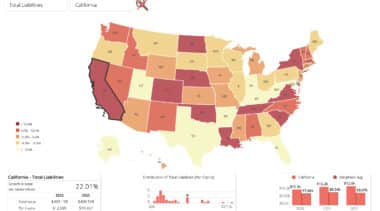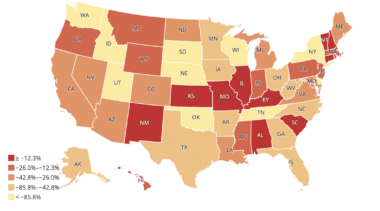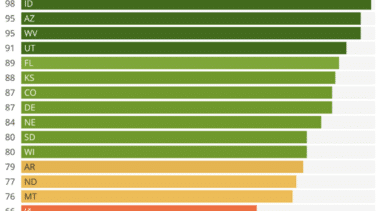-
Tennessee Senate Bill 310 would prohibit driverless vehicles
Automated vehicle technology could greatly improve road safety and efficiency.
-
Psychedelic treatment for neurodegenerative disorders
Recent research suggests that psychedelics, such as psilocybin and LSD, show strong potential as effective treatments for neurodegenerative disorders.
-
An overview of Ohio’s open enrollment policies
Ohio gets a grade of "F" in Reason Foundation's report evaluating each state’s open enrollment laws in seven critical areas.
-
An overview of Missouri’s open enrollment policies
Missouri gets a grade of "F" in Reason Foundation's report evaluating each state’s open enrollment laws in seven critical areas.
-
An overview of Mississippi’s open enrollment policies
Mississippi gets a grade of "F" in Reason Foundation's report evaluating each state’s open enrollment laws in seven critical areas.
-
Debt trends for state and local governments 2020-2022
This tool provides debt and spending insights for the 100 largest municipalities, counties and school districts in America and all 50 states for fiscal years 2020, 2021 and 2022.
-
City debt: New York has more than four times the liabilities of Chicago, Los Angeles, Houston and other cities
New York City, the District of Columbia, Chicago, Atlanta, Yonkers and Austin have the most per capita liabilities.
-
County debt: Los Angeles, Miami-Dade and Cook counties among worst in nation
Los Angeles County had $54 billion in liabilities at the end of 2022. Miami-Dade County had $29 billion in total liabilities.
-
State debt: California, Illinois, New York, New Jersey and Texas each have over $200 billion in total liabilities
On a per capita basis, Connecticut's $27,031 total liabilities per capita are worst in the nation, followed by New Jersey.
-
Psychedelic drug policy recommendations for the incoming Trump administration
The incoming Trump administration has promised sweeping reforms, and that might include reversing the federal suppression of psychedelics.
-
Public schools without boundaries 2024: Ranking every state’s open enrollment laws
Study finds Arizona, Idaho, Oklahoma, Utah, and West Virginia have the best public school transfer and open enrollment laws.
-
Rent control implications and policy alternatives
Seven states currently have rent control laws, and 20 states introduced bills related to rent control in 2024.
-
Best practices in optional defined contribution plans for public workers
Governments expanding their retirement options can offer better benefits to employees and slow the growing costs caused by unfunded public pension liabilities.
-
Vision Zero and Complete Streets: Do they make roads safer?
In the wake of rising traffic fatalities, municipalities have been looking for a comprehensive solution to reduce or eliminate traffic fatalities.
-
Annual pension solvency and performance report
At the end of the 2023 fiscal year, the nation's public pension systems had $1.59 trillion in total unfunded liabilities.
-
Working paper: Best practices in optional defined contribution plans
With the proliferation of unfunded pension liabilities among U.S. governments, optional defined contribution plans can serve as valuable risk mitigation solutions.
-
The case for Connecticut’s fiscal guardrails
The “fiscal guardrails” have saved Connecticut more than $170 million and could save $7 billion over the next 25 years.
-
A framework for federal and state hemp-derived cannabinoid regulation
The growing popularity of hemp-derived products has stimulated significant legislative attention in recent years, with over 90 regulatory proposals introduced in state legislatures in 2024 alone.

















